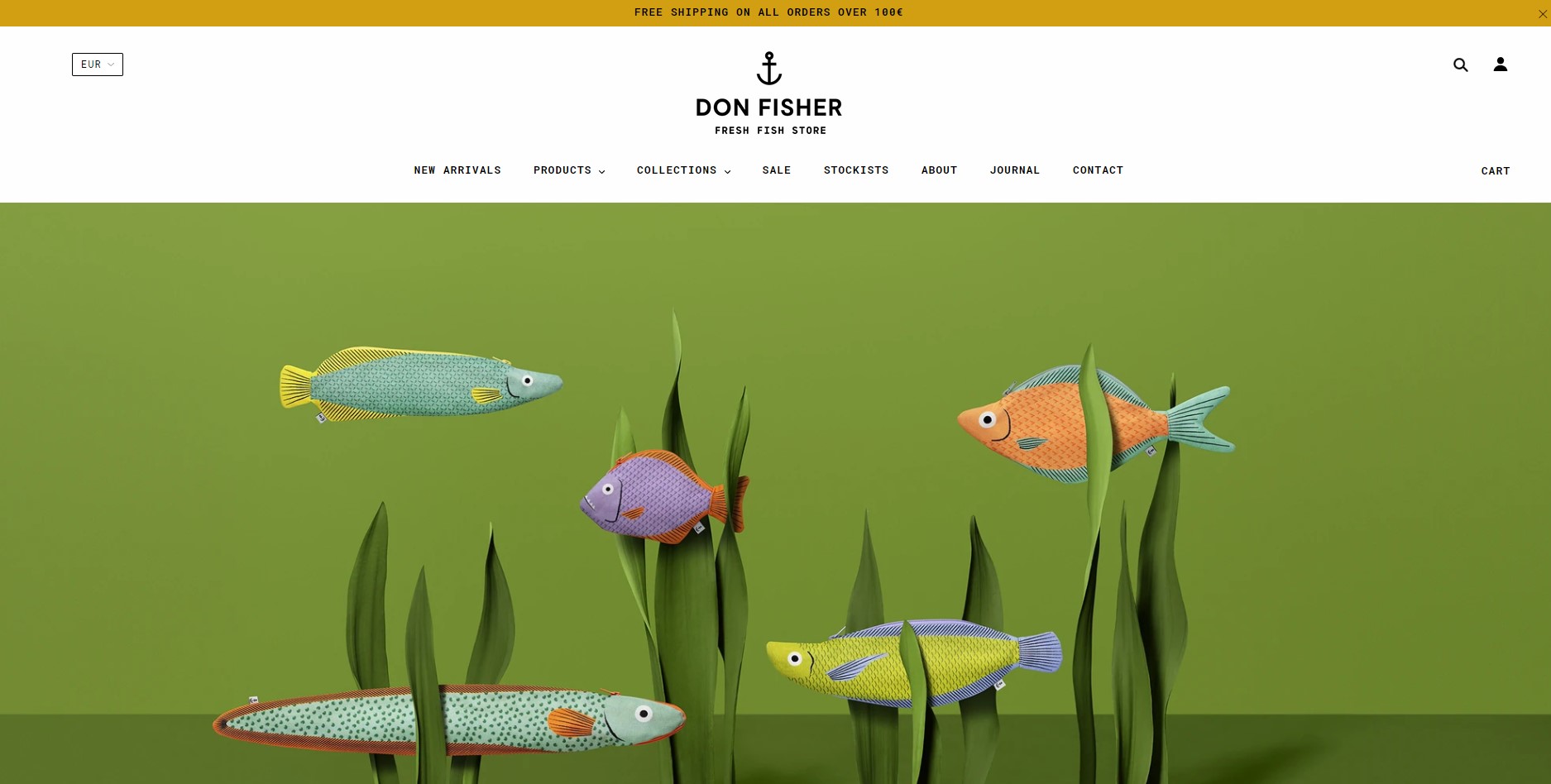How To Brand Your Etsy Shop: A Comprehensive Guide to Stand Out and Thrive
In the bustling world of Etsy, where creative entrepreneurs showcase their handcrafted and vintage items, standing out from the crowd is more important than ever.

As an Etsy shop owner, your brand is the key to capturing your target audience’s attention, setting yourself apart from competitors, and ultimately, driving sales. But how do you go about creating a powerful and memorable brand for your Etsy shop?
In this comprehensive guide, we’ll take you through the essential steps of branding your Etsy shop, from understanding your brand identity and choosing the right name, to designing a cohesive visual aesthetic and leveraging social media for promotion.
By following these tried-and-true strategies, you’ll be well on your way to building a thriving and successful Etsy shop that leaves a lasting impression on customers. So, let’s dive in and explore the art of branding your Etsy shop!
Importance of branding on Etsy
The importance of branding on Etsy cannot be overstated.
In a marketplace where customers have countless choices at their fingertips, a strong and memorable brand can make all the difference. Not only does effective branding help you stand out among competitors and fosters customer loyalty and recognition, enabling your shop to thrive in the long run.
By carefully crafting your brand, you’ll be able to communicate your unique selling proposition and convey the essence of your shop, which in turn, helps potential customers connect with your products on a deeper level. Moreover, a well-established brand instills trust and credibility, leading to higher conversion rates and repeat purchases.
In this comprehensive blog post, we’ll guide you through the process of branding your Etsy shop to ensure it stands out and thrives amidst the competition. We’ll begin by exploring the foundational aspects of brand identity, such as defining your target audience, identifying your unique selling proposition, and creating a brand mission statement. Next, we’ll delve into the practical aspects of branding, from choosing the perfect name for your Etsy shop and designing an eye-catching logo to creating consistent visual branding with the right color palette and fonts.
As we move forward, we’ll discuss the importance of crafting compelling product descriptions that resonate with your audience and optimizing your Etsy shop’s banner and About section to create a cohesive brand experience. Additionally, we’ll explore the potential of social media and other marketing channels, and how collaborating with influencers and other Etsy sellers can amplify your brand’s reach.
Customer service is another crucial aspect of branding that cannot be overlooked. We’ll share valuable tips on providing outstanding customer service, establishing clear communication, and going the extra mile to delight your customers. Finally, we’ll emphasize the importance of continuously evolving and adapting your brand in response to industry trends, customer feedback, and changing needs.
Following the strategies outlined in this blog post will equip you with the knowledge and tools to develop a powerful and memorable brand for your Etsy shop. As a result, you’ll be well on your way to carving out your niche in the marketplace and building a loyal customer base that keeps coming back for more.
Understand your brand identity
Understanding your brand identity is a crucial first step in building a successful Etsy shop.
Your brand identity is the essence of who you are as a business and what sets you apart from competitors. It serves as the foundation for all your branding efforts, helping you create a cohesive and consistent brand experience for your customers. To develop a solid brand identity, you’ll need to define your target audience, identify your unique selling proposition, and create a brand mission statement.
Define your target audience
Your target audience refers to the specific group of people who are most likely to be interested in your products. By understanding who they are, you can tailor your branding and marketing efforts to appeal to them effectively.
To define your target audience, consider factors such as age, gender, location, interests, and income levels. Think about the problems your products solve and the desires they fulfill, as this will help you identify the right customer segments to target. Conducting market research, analyzing competitor shops, and engaging with potential customers through social media or surveys can also provide valuable insights into your target audience.
Identify your Unique Selling Proposition
Your unique selling proposition (USP) is the distinctive quality or feature that sets your products apart from others in the market. It’s the reason why customers should choose your Etsy shop over your competitors. To identify your USP, consider aspects such as product design, craftsmanship, materials used, and the story behind your creations.
Think about the overall customer experience you offer, from personalized packaging to exceptional customer service. By pinpointing your USP, you can ensure your branding efforts focus on highlighting the aspects that make your shop truly unique and appealing to your target audience.
Create a Brand Mission Statement
A brand mission statement is a concise declaration that outlines your shop’s purpose, values, and goals. It serves as a guiding principle for your branding efforts and helps communicate the essence of your business to customers.
To create a compelling brand mission statement, consider the following questions:
- Why did you start your Etsy shop?
- What values and beliefs underpin your business?
- What impact do you want your products to have on your customers’ lives?
Once you’ve reflected on these questions, craft a clear and concise statement that encapsulates your answers. Remember, your brand mission statement should resonate with your target audience, as well as inspire and motivate you as a business owner.
Take your time to understand your brand identity, and you’ll establish a strong foundation for all your branding efforts. With a clearly defined target audience, unique selling proposition, and brand mission statement, you’ll be well-equipped to create a cohesive and memorable brand experience that sets your Etsy shop apart and helps you attract and retain loyal customers.
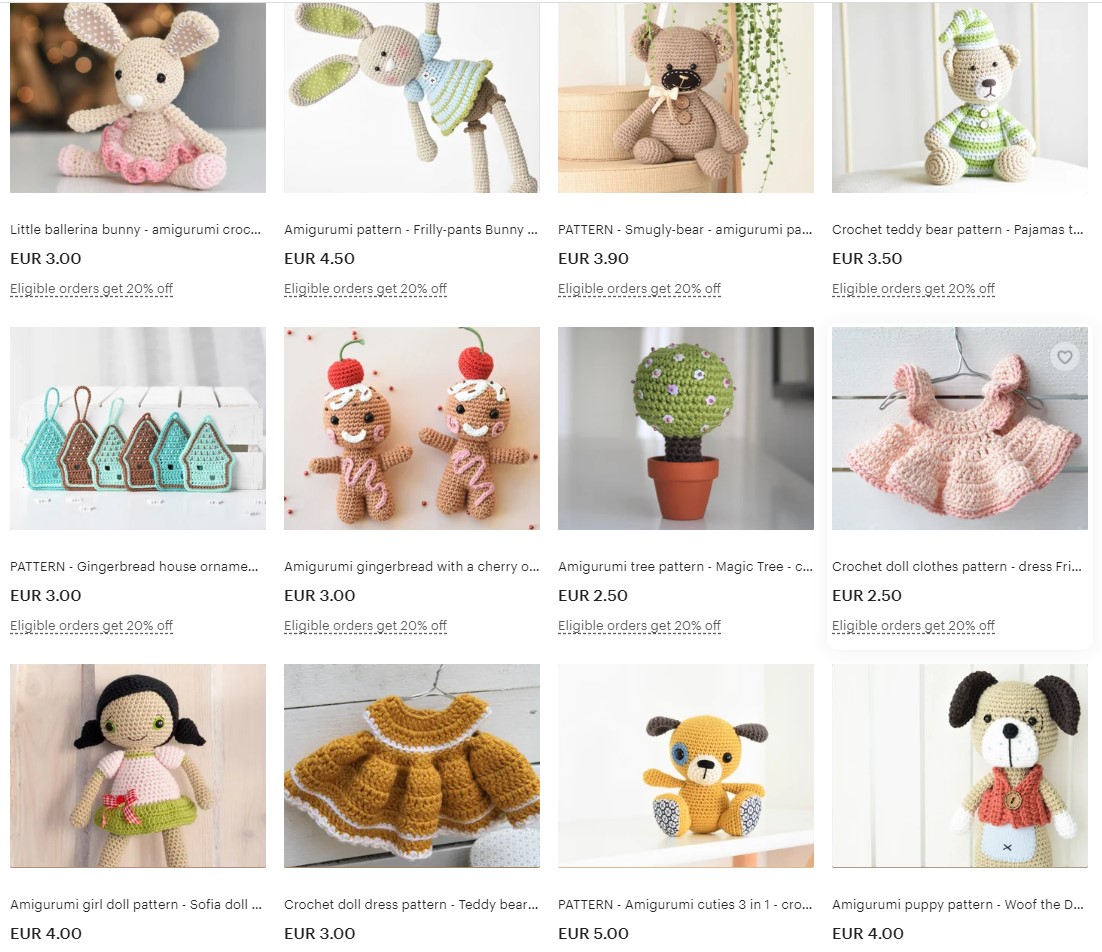
Choose the right name for your Etsy shop
Your shop’s name serves as the first point of contact with potential customers and plays a significant role in shaping their perception of your business.
A well-chosen name can pique curiosity, evoke emotions, and convey the essence of your brand. To select the perfect name for your Etsy shop, follow these steps:
Brainstorm ideas
Begin by brainstorming a list of potential names for your shop.
This is an opportunity to get creative and think about the qualities you want your brand to embody. To generate ideas, consider the following:
- Descriptive words: Think about words that describe your products, the materials you use, or the techniques employed in your creations.
- Emotional appeal: Consider words that evoke emotions or create a sense of atmosphere, such as “cozy,” “whimsical,” or “vibrant.”
- Wordplay: Explore puns, alliterations, or rhymes to create a catchy and memorable name.
- Personal connections: Incorporate your name, initials, or a meaningful location to add a personal touch to your shop’s name.
- Foreign languages: Look for inspiration in other languages, as they can offer unique and intriguing words that resonate with your brand’s identity.
During the brainstorming process, don’t be afraid to think outside the box and come up with a wide range of ideas. Once you have a comprehensive list, narrow it down to your top choices by considering which names best align with your brand identity, target audience, and unique selling proposition.
Check the availability on Etsy and other platforms
Before settling on a name, it’s essential to check its availability on Etsy and other platforms.
Your shop name should be unique to avoid confusion with existing businesses and ensure a consistent online presence. To check availability on Etsy, use the site’s search feature or attempt to create a new shop with your desired name. Remember to verify that the name is available as a domain name and on popular social media platforms, as you may want to secure these for future marketing purposes.
Ensure your shop name is memorable and easy to spell
Finally, make sure your chosen name is memorable and easy to spell.
A simple, catchy name will make it easier for potential customers to remember and find your shop. Keep these tips in mind:
- Avoid overly long names, as they can be challenging to remember and may not display well on Etsy’s search results or social media.
- Steer clear of names with difficult or unconventional spellings, which can lead to confusion and make it harder for customers to locate your shop.
- Test your chosen name with friends, family, or your target audience to gather feedback and ensure it resonates with others.
If you take the time to choose the right name for your Etsy shop, you’ll lay the groundwork for a strong and memorable brand. A well-thought-out name can capture the essence of your business, appeal to your target audience, and set you on the path to success in the Etsy marketplace.
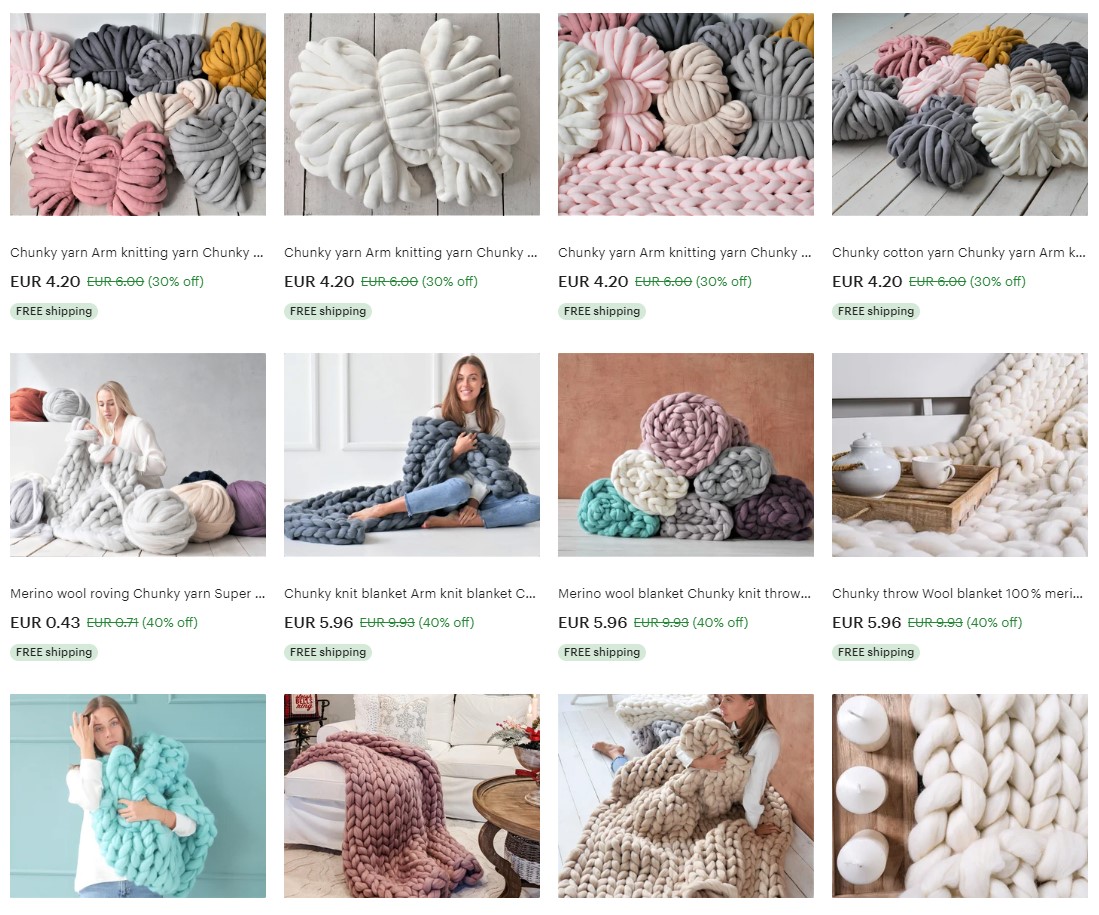
Design a cohesive and attractive logo
A well-designed logo creates a memorable first impression and serves as a visual representation of your brand’s identity, values, and unique selling proposition.
Importance of a well-designed logo
A well-designed logo offers numerous benefits for your Etsy shop:
- Brand recognition: A distinctive logo helps customers instantly recognize and associate your shop with a particular product or service, increasing the likelihood of repeat business.
- Professionalism: A polished, professionally designed logo conveys credibility and trustworthiness, inspiring confidence in potential customers.
- Consistency: A cohesive logo contributes to a consistent visual identity across your Etsy shop, social media platforms, and marketing materials, reinforcing your brand’s message.
- Emotional connection: An effective logo can evoke emotions or create a sense of atmosphere, helping to forge a deeper connection with your target audience.
DIY logo design options
If you have a flair for design or are on a tight budget, creating your logo can be a rewarding experience.
Here are some DIY logo design options to consider:
- Graphic design software: Programs such as Adobe Illustrator, Canva, or Inkscape offer a range of tools and templates to help you design a professional-looking logo.
- Online logo makers: Websites like LogoMaker, Tailor Brands, or Looka provide easy-to-use platforms for creating a custom logo, often with minimal design experience required.
- Sketching and scanning: If you prefer a more hands-on approach, try sketching your logo ideas on paper, then scanning and refining your design using graphic design software.
When designing your logo, keep the following tips in mind:
- Simplicity: Aim for a clean, uncluttered design that is easily recognizable and scalable to various sizes.
- Relevance: Ensure your logo reflects your brand’s identity and appeals to your target audience.
- Versatility: Design your logo in a vector format, allowing for easy resizing without loss of quality. Consider how your logo will appear in different contexts, such as on product packaging, social media, or printed materials.
Hiring a professional designer
If you lack design skills or simply want to ensure a top-quality logo, hiring a professional designer may be the best option.
Here are some steps to guide you through the process:
- Research: Look for designers with experience in creating logos for Etsy shops or similar businesses. Browse their portfolios to assess their design style and expertise.
- Budget: Determine your budget and compare prices among different designers or design agencies, keeping in mind that a well-designed logo is a worthwhile investment for your brand.
- Communication: Clearly communicate your brand identity, target audience, and design preferences to your chosen designer. Provide examples of logos you admire and explain why they appeal to you.
- Feedback: Collaborate closely with your designer throughout the design process, offering feedback and requesting revisions as needed to achieve the perfect logo for your shop.
By designing a cohesive and attractive logo, you’ll create a powerful visual symbol for your Etsy shop that captures the essence of your brand and resonates with your target audience. Whether you choose to create your logo yourself or enlist the help of a professional designer, investing time and effort in this crucial branding element will pay off in the long run as you build a successful and thriving Etsy shop.
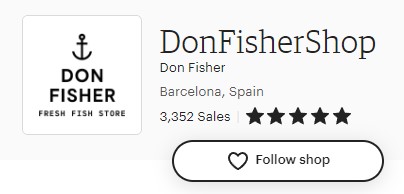
Create a consistent visual branding
Creating consistent visual branding is essential for establishing a cohesive and memorable brand identity for your Etsy shop.
A well-defined visual branding enhances your shop’s aesthetics and also helps customers recognize and connect with your brand more easily.
Select a color palette
Colors play a significant role in shaping the overall perception of your brand, evoking emotions, and conveying your brand’s personality. To select a color palette that aligns with your brand identity, consider the following steps:
- Understand color psychology: Familiarize yourself with the emotions and associations commonly associated with different colors. For example, red often conveys passion and excitement, while blue suggests trust and stability. Choose colors that reflect your brand’s values and resonate with your target audience.
- Look for inspiration: Gather inspiration from various sources, such as nature, art, or design websites. Pinterest can be a valuable tool for discovering and saving color combinations that appeal to you.
- Limit your palette: Aim for a primary color palette of 2-4 colors that complement each other and provide visual harmony. Additionally, choose 1-3 secondary or accent colors to add variety and depth to your designs.
Remember to consider color accessibility and how your chosen colors appear on different devices or when printed, ensuring that your visual branding remains clear and consistent across various contexts.
Choose the right fonts
Typography is another critical element of your visual branding, as it can significantly impact your brand’s overall look and feel.
When choosing fonts for your Etsy shop, keep the following tips in mind:
- Align with your brand personality: Select fonts that reflect your brand’s identity and complement your chosen color palette. For instance, a whimsical, hand-drawn font might suit a playful, artisanal brand, while a sleek, minimalist font could be ideal for a modern, upscale shop.
- Prioritize readability: Ensure that your chosen fonts are easy to read on various devices and screen sizes. Avoid overly decorative or ornate fonts that might compromise legibility, particularly for essential information such as product titles or descriptions.
- Limit your font choices: Stick to 2-3 fonts for your visual branding to maintain consistency and avoid clutter. Typically, a combination of a serif, sans-serif, and a script or decorative font can provide enough variety without being overwhelming.
Apply visual branding elements to your shop
With your color palette and fonts selected, it’s time to apply these visual branding elements to your Etsy shop to create a cohesive and engaging brand experience:
- Logo and banner: Incorporate your logo and color palette into your Etsy shop’s banner and profile image. Ensure that your banner is eye-catching, clearly displays your shop’s name, and reflects your overall brand aesthetic.
- Product photography: Use a consistent style, background, and lighting for your product photos, and consider incorporating your brand colors as accents. Consistency in your images will help your shop appear more professional and make it easier for customers to browse your listings.
- Listing descriptions and titles: Apply your chosen fonts to your listing titles and descriptions, ensuring that they are readable and visually appealing. Break up large blocks of text with headings, bullet points, or bolded keywords to enhance readability.
- Packaging and marketing materials: Extend your visual branding to your product packaging, business cards, thank-you notes, and any other marketing materials. This consistency will reinforce your brand’s identity and leave a lasting impression on your customers.
By creating consistent visual branding for your Etsy shop, you’ll establish a cohesive and memorable brand identity that sets you apart from competitors and resonates with your target audience.

Write compelling product descriptions
Writing compelling product descriptions is crucial for attracting customers and driving sales in your Etsy shop.
A well-crafted description not only provides essential information about your product but also tells a story that connects with your target audience, evokes emotions, and highlights your unique selling proposition.
The importance of storytelling
Storytelling is a powerful tool for drawing customers into your brand’s world and helping them visualize how your products will enhance their lives.
By incorporating storytelling elements into your product descriptions, you can create an emotional connection with your audience, which can lead to increased sales and customer loyalty. To weave storytelling into your product descriptions, consider the following tips:
- Share the inspiration behind your product: Describe the creative process or the story behind your product’s creation, as this can help customers appreciate the craftsmanship and thought that went into it.
- Highlight the benefits and features: Focus on how your product will solve a problem, fulfill a need, or bring joy to your customers. Describe the unique features or details that set your product apart from others in the market.
- Appeal to your target audience: Speak directly to your ideal customer by using language and tone that resonates with their preferences, values, and lifestyle.
Use keywords effectively
Incorporating relevant keywords into your product descriptions is essential for improving your Etsy shop’s search visibility and attracting potential customers.
To use keywords effectively in your product descriptions, keep the following guidelines in mind:
- Research popular keywords: Use tools like Etsy’s search bar, Google Keyword Planner, or Marmalead to identify high-traffic keywords related to your product. Look for long-tail keywords (phrases with three or more words) that are specific to your niche, as these can be less competitive and more targeted.
- Use keywords naturally: Integrate your chosen keywords seamlessly into your product descriptions, ensuring that they sound organic and don’t detract from your storytelling. Avoid keyword stuffing, as this can be off-putting to readers and may harm your search rankings.
- Optimize titles and tags: In addition to your descriptions, incorporate relevant keywords into your product titles and tags to further boost your Etsy search visibility.
Format for readability
A well-formatted product description is crucial for ensuring that your customers can easily read and understand the information you provide. T
o format your descriptions for maximum readability, follow these tips:
- Break up large blocks of text: Divide your description into short paragraphs or bullet points to make it easier to skim and digest. Use subheadings to highlight key sections or features.
- Emphasize important information: Use bold or italic text, capitalization, or underlining to draw attention to essential details, such as product dimensions, materials, or customization options.
- Maintain a consistent style: Use the same formatting and layout across all your product descriptions to create a cohesive and professional look for your Etsy shop.
By writing compelling product descriptions that incorporate storytelling, effective keyword usage, and reader-friendly formatting, you’ll create a captivating and informative shopping experience for your customers. This, in turn, can lead to increased engagement, higher conversion rates, and a thriving Etsy shop that stands out in the marketplace.
Optimize your Etsy shop’s banner and About section for creating a professional and memorable first impression for potential customers.
A well-designed banner and engaging About section can effectively convey your brand’s identity, values, and unique selling proposition, setting you apart from the competition and fostering a connection with your target audience. In this guide, we’ll explore the key elements for creating an eye-catching banner, crafting an engaging About section, and highlighting your brand’s story and values.
Your Etsy shop’s banner serves as a visual introduction to your brand and is often the first thing customers see when visiting your shop.
To create an eye-catching banner that captures your brand’s essence, consider the following tips:
- Choose high-quality images: Select visually appealing, high-resolution images that showcase your products, your creative process, or your brand’s inspiration. Ensure that your images are crisp, well-lit, and accurately represent your brand’s aesthetic.
- Incorporate your logo and color palette: Feature your logo prominently in your banner to reinforce brand recognition. Use your brand’s color palette to create a cohesive and harmonious design that complements your shop’s overall visual identity.
- Keep it simple and uncluttered: Avoid overcrowding your banner with too many elements, as this can detract from your shop’s professionalism and readability. Instead, focus on a few key visuals and design components that effectively convey your brand’s message.
- Optimize for various devices: Ensure that your banner looks great on desktop, tablet, and mobile devices by using Etsy’s recommended banner dimensions and accounting for potential cropping or resizing issues.
Craft an engaging About section
The About section of your Etsy shop provides an opportunity to share your brand’s story, highlight your unique selling points, and connect with your target audience on a more personal level.
To craft an engaging About section, follow these guidelines:
- Introduce yourself and your brand: Begin by briefly introducing yourself, your background, and the inspiration behind your Etsy shop. This personal touch can help customers relate to you and better understand your brand’s origins.
- Share your creative process: Describe the methods, techniques, and materials you use to create your products. Providing insight into your creative process can help customers appreciate the craftsmanship and care that goes into each item.
- Showcase your achievements: Highlight any awards, press mentions, or notable collaborations that demonstrate your shop’s credibility and success. This can help build trust and establish your shop as a reputable and sought-after brand.
Highlight your brand’s story and values
A compelling brand story and clear values can set your Etsy shop apart from competitors and resonate with your target audience.
To effectively showcase your brand’s story and values, consider these tips:
- Emphasize your unique selling points: Clearly communicate what sets your shop apart from others, whether it’s your use of eco-friendly materials, innovative designs, or exceptional customer service. Emphasizing your unique selling points can help customers understand the value of your products and why they should choose your shop.
- Align with your target audience’s values: Demonstrate how your brand’s values align with those of your target audience. For example, if your customers are environmentally conscious, highlight your commitment to sustainable practices and ethical sourcing.
- Showcase your brand’s personality: Infuse your writing with your brand’s unique voice and tone, whether it’s quirky, sophisticated, or down-to-earth. This can help create a memorable and authentic brand experience that resonates with your audience.
By optimizing your Etsy shop’s banner and About section, you’ll create a professional and inviting online storefront that effectively showcases your brand’s identity, values, and unique selling proposition. This can help attract your target audience, foster a connection with potential customers
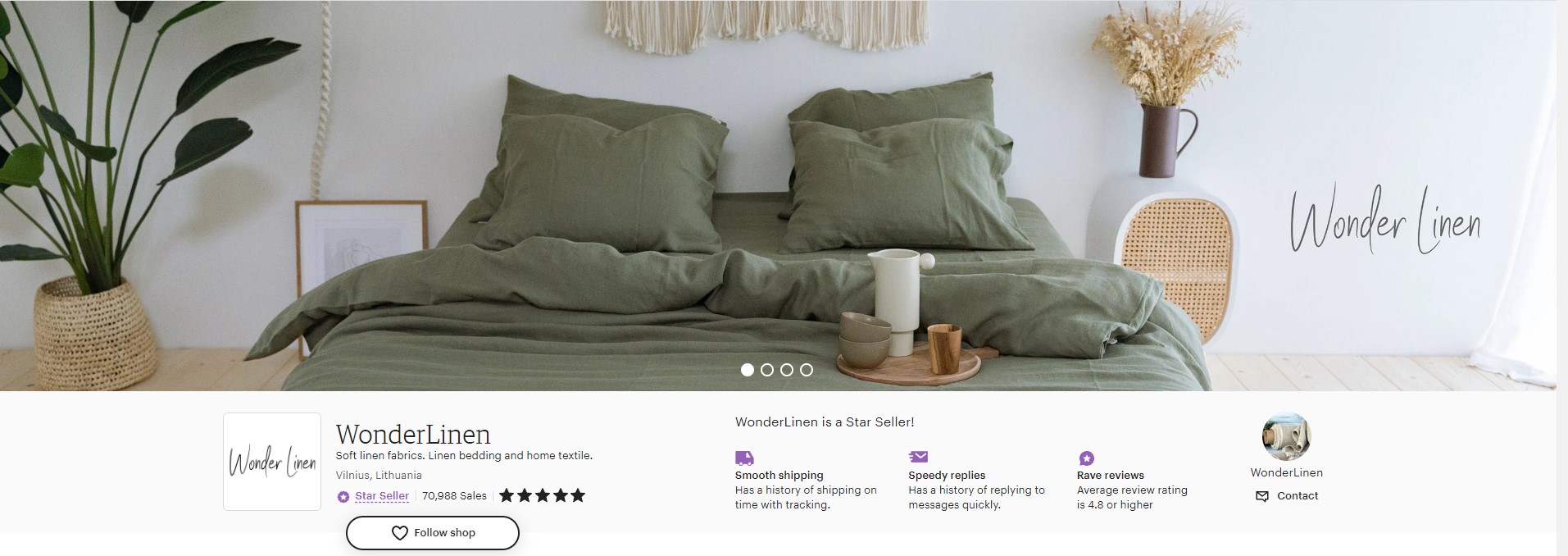
Utilize Social Media and other marketing channels
Utilizing social media and other marketing channels is essential for promoting your Etsy shop, increasing brand awareness, and attracting new customers.
To effectively harness the power of social media and other marketing avenues, it’s crucial to choose the right platforms for your brand, develop a content strategy, and collaborate with influencers and other Etsy sellers. In this guide, we’ll explore each of these aspects in detail to help you boost your Etsy shop’s visibility and grow your customer base.
Choose the right platforms for your brand
The first step in leveraging social media and other marketing channels is to identify the platforms that best align with your brand and target audience.
To select the right platforms, consider the following factors:
- Demographics: Research the demographics of each platform’s user base to determine which channels are most popular with your target audience. For example, Instagram and TikTok tend to have younger user bases, while Facebook and Pinterest cater to a broader age range.
- Content format: Consider the types of content that best showcase your products and brand story. If your products are visually appealing, platforms like Instagram, Pinterest, or YouTube may be ideal. If you prefer written content, a blog or Twitter might be more suitable.
- Time and resources: Assess the amount of time and resources you can dedicate to managing your social media and marketing efforts. Some platforms, like Instagram and TikTok, may require more frequent content updates, while others, like Pinterest and a blog, can be more evergreen.
Develop a content strategy
Once you’ve chosen your platforms, it’s essential to develop a content strategy that engages your audience and showcases your brand’s unique selling points.
- Set goals: Establish clear objectives for your social media and marketing efforts, such as increasing brand awareness, driving traffic to your Etsy shop, or boosting sales. These goals will help guide your content creation and measure your success.
- Create a content calendar: Plan your content in advance by creating a content calendar that outlines the topics, formats, and posting frequency for each platform. This will help ensure you maintain a consistent presence and avoid last-minute scrambling for content ideas.
- Share a mix of content: Offer a variety of content that appeals to your target audiences, such as product showcases, behind-the-scenes glimpses, customer testimonials, or educational posts. This mix will keep your followers engaged and interested in your brand.
Collaborate with influencers and other Etsy sellers
Collaborating with influencers and other Etsy sellers can help expand your reach, increase your credibility, and generate valuable social proof. T
- Identify relevant influencers: Look for influencers who share your target audience and have a genuine interest in your products or niche. Ensure that their content and values align with your brand and that their followers are likely to be interested in your Etsy shop.
- Offer value in exchange for promotion: Provide influencers with free products, discounts, or affiliate commissions in exchange for promoting your Etsy shop to their followers. Ensure that your offer is mutually beneficial and clearly communicates the expectations of both parties.
- Collaborate with fellow Etsy sellers: Connect with other Etsy sellers in your niche or complementary industries to cross-promote each other’s shops, share resources, or collaborate on joint projects. These partnerships can help you reach new audiences and learn valuable insights from fellow entrepreneurs.
By utilizing social media and other marketing channels strategically, you can increase your Etsy shop’s visibility, attract new customers, and foster a loyal and engaged community around your brand. Remember to continually assess and adjust your strategy based on your goals, audience, and performance metrics to ensure ongoing success.
Offer outstanding customer service
Offering outstanding customer service is vital for building a successful and reputable Etsy shop.
Exceptional customer service not only fosters customer loyalty and positive word-of-mouth marketing but also sets your brand apart from competitors in the crowded marketplace. In this guide, we’ll discuss the importance of customer service in building your brand, establishing clear communication, and going the extra mile to delight customers.
Importance of customer service in building your brand
Investing in customer service can significantly impact your brand’s reputation, customer retention, and overall success.
Here are some reasons why customer service is essential for building your brand on Etsy:
- Builds trust and credibility: Providing prompt, helpful, and courteous support helps establish trust and credibility with your customers. This trust can lead to repeat purchases and encourage customers to recommend your Etsy shop to their friends and family.
- Enhances brand reputation: Positive customer service experiences often translate into glowing reviews and testimonials, which can help improve your shop’s online reputation and attract new customers.
- Increases customer retention: Ensuring that your customers are satisfied with their purchase and overall experience can help turn one-time buyers into loyal, repeat customers who continue to support your shop over time.
Establish clear communication
Clear communication is the foundation of outstanding customer service.
By promptly addressing customer inquiries, providing helpful information, and setting realistic expectations, you can enhance your customer’s experience and reduce potential issues. Here are some tips for establishing clear communication with your customers:
- Respond to messages quickly: Make it a priority to reply to customer messages within 24 hours, if not sooner. A timely response demonstrates that you value your customers and are committed to addressing their concerns.
- Be proactive: Reach out to customers with order updates, shipping information, or potential delays to keep them informed and manage their expectations. This proactive approach can help minimize surprises and create a smoother customer experience.
- Provide detailed product information: Ensure that your product listings include comprehensive details about your items, such as dimensions, materials, care instructions, and customization options. This transparency can help reduce customer questions and prevent misunderstandings.
Go the extra mile to delight customers
To truly stand out in the Etsy marketplace, consider going the extra mile to delight your customers and exceed their expectations.
Here are some ways to add a personal touch and make your customers feel valued:
- Offer personalized packaging: Invest in a branded or custom packaging that showcases your products and enhances the unboxing experience. Including a handwritten thank-you note or a small, unexpected gift can also make a lasting impression on your customers.
- Provide exceptional after-sales support: Follow up with your customers after their purchase to ensure they’re satisfied with their items and address any concerns or issues that may arise. Offering refunds or exchanges when appropriate can demonstrate your commitment to customer satisfaction.
- Create a loyalty program: Reward your loyal customers with exclusive discounts, early access to new products, or other perks that encourage repeat purchases and foster a sense of community around your brand.
By offering outstanding customer service, you can create a memorable and positive experience for your Etsy shop’s customers, which can lead to increased brand loyalty, positive reviews, and word-of-mouth referrals. Ultimately, investing in customer service can help your Etsy shop thrive and stand out in the competitive marketplace.

Continuously evolve and adapt your brand
In the ever-changing world of e-commerce, it is crucial for Etsy shop owners to continuously evolve and adapt their brand to remain relevant, innovative, and responsive to customer needs.
Embracing change and staying attuned to trends and industry shifts can help your brand grow, maintain a competitive edge, and foster long-term success. In this guide, we will discuss how monitoring trends and industry changes, seeking customer feedback, and adapting your brand strategy as needed can contribute to the ongoing evolution and adaptation of your brand.
Monitor trends and industry changes
Keeping a pulse on emerging trends, technological advancements, and changes within your niche or industry can provide valuable insights that inform your brand’s growth and direction.
Stay informed, and you can proactively adjust your product offerings, marketing strategies, and overall brand identity to align with evolving customer preferences and expectations. To monitor trends and industry changes, consider:
- Follow industry publications, blogs, and influencers: Stay informed about the latest developments in your niche by regularly reading industry-specific publications, and blogs, and following influential figures on social media.
- Participate in online forums and groups: Engage with other Etsy sellers, industry professionals, and enthusiasts in online forums, Facebook groups, or LinkedIn groups. These communities can offer invaluable insights, tips, and discussions about the latest trends and changes.
- Attend industry events and conferences: Participate in trade shows, conferences, and workshops to network with fellow entrepreneurs, learn from industry experts, and discover new opportunities for growth and innovation.
Seek customer feedback
Customer feedback is a vital resource for understanding how your brand is perceived, identifying areas for improvement, and uncovering new opportunities for growth.
By actively seeking and incorporating customer feedback, you can continuously refine your brand strategy to better meet your customers’ needs and expectations. To solicit customer feedback, consider:
- Send post-purchase surveys: Request feedback from customers after they have made a purchase to learn about their experience with your products, customer service, and overall satisfaction.
- Encourage reviews and testimonials: Invite customers to share their thoughts and experiences with your Etsy shop by leaving reviews or providing testimonials. These can offer valuable insights into your brand’s strengths and weaknesses, as well as serve as social proof for potential customers.
- Engage with customers on social media: Monitor your social media channels for customer comments, questions, and concerns, and use these interactions as opportunities to gather feedback and improve your brand.
Adapt your brand strategy as needed
As you gather insights from trends, industry changes, and customer feedback, it’s essential to adapt your brand strategy accordingly to remain competitive and responsive to customer needs.
To effectively adapt your brand strategy, consider:
- Regularly reviewing and updating your product offerings: Ensure that your products remain fresh, relevant, and aligned with current customer preferences by frequently evaluating your inventory and introducing new items or discontinuing underperforming products.
- Revisiting your brand identity: Periodically assess your brand’s visual identity, mission statement, and unique selling proposition to ensure they remain current, authentic, and resonate with your target audience. Make adjustments as needed to reflect your brand’s evolution and growth.
- Adjusting your marketing and promotional efforts: Continually refine your marketing strategies, messaging, and promotional tactics to align with the changing needs of your customers and the dynamics of the marketplace.
By continuously evolving and adapting your brand, you can better meet the needs of your customers, maintain a competitive edge, and foster sustainable growth for your Etsy shop. Embrace change as an opportunity to learn, innovate, and strengthen your brand’s position in the marketplace.
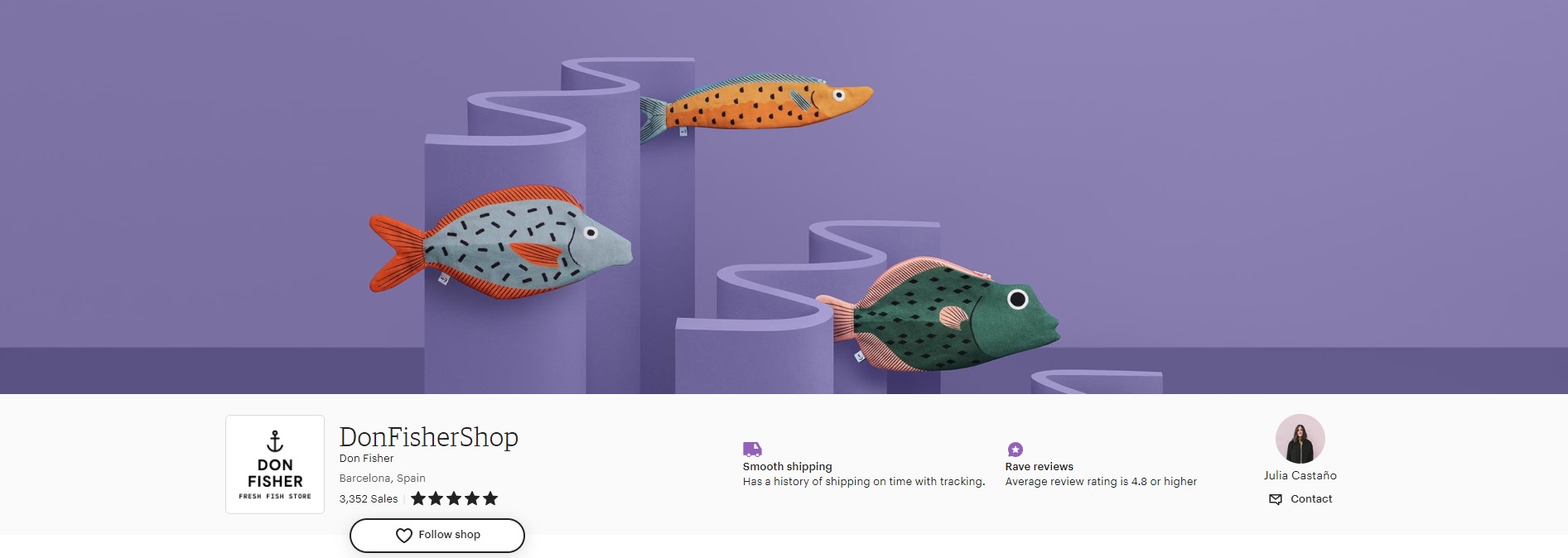

Conclusion
In conclusion, branding is critical to building a successful Etsy shop that stands out in a competitive marketplace.
As we’ve discussed, key branding tips for Etsy shop owners include understanding your brand identity, choosing the right shop name, designing a cohesive and attractive logo, creating consistent visual branding, writing compelling product descriptions, optimizing your Etsy shop’s banner and about section, utilizing social media and other marketing channels, offering outstanding customer service, continuously evolving and adapting your brand, and more.
Investing time and effort in developing a strong brand for your Etsy shop is essential to attract and retaining customers, establishing trust and credibility, and fostering long-term success. A well-crafted brand not only sets your shop apart from competitors but also creates an emotional connection with your target audience, turning casual shoppers into loyal customers.
As you embark on your journey to build and grow your Etsy shop, remember the importance of branding in shaping your shop’s identity, reputation, and overall customer experience. By consistently applying these branding principles and adapting to the ever-changing marketplace, you can create a thriving Etsy business that resonates with your customers and stands the test of time.
Read more about visual branding
Brand Anatomy – What Is It, And What Are Its Key Elements?
Brand Style Guide: How to Write One for Your Brand
How To Make A Brand Mood Board
Last Updated on 06/04/2025 by Victoria Silber




